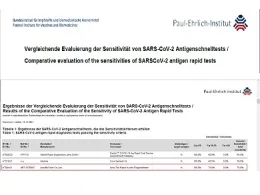Diagnostics of COVID-19 Coronavirus Disease
In Report of the WHO-China Joint Mission on Coronavirus Disease 2019 (COVID-19) issued by WHO on Feb. 28, the diagnostics of COVID-19 Coronavirus Disease was introduced as one of the Detailed Technical Findings as following:
The virus found to cause COVID-19 was initially isolated from a clinical sample on 7 January. It is notable that within weeks following the identification of the virus, a series of reliable and sensitive diagnostic tools were developed and deployed. On 16 January, the first RTPCR assays for COVID-19 were distributed to Hubei. Real-time PCR kits were distributed to all the provinces on 19 January and were provided to Hong Kong SAR and Macao SAR on 21 January. Information regarding viral sequences and PCR primers and probes was shared with WHO and the international community by China CDC on 12 January 2020. To facilitate product development and research on the new virus, COVID-19 virus sequences were uploaded to the GISAID Database by China.
By 23 February, there were 10 kits for detection of COVID-19 approved in China by the NMPA, including 6 RT-PCR kits, 1 isothermal amplification kit, 1 virus sequencing product and 2 colloidal gold antibody detection kits. Several other tests are entered in the emergency approval procedure. Currently, there are at least 6 local producers of PCR test kits approved by NMPA. Overall, producers have the capacity to produce and distribute as many as 1,650,000 tests/week.
Specimens from both the upper respiratory tract (URT; nasopharyngeal and oropharyngeal) and lower respiratory tract (LRT; expectorated sputum, endotracheal aspirate, or bronchoalveolar lavage) are collected for COVID-19 testing by PCR.
COVID-19 virus has been detected in respiratory, fecal and blood specimens. According to preliminary data from Guangzhou CDC as of 20 February, virus can initially be detected in upper respiratory samples 1-2 days prior to symptom onset and persist for 7-12 days in moderate cases and up to 2 weeks in severe cases. Viral RNA has been detected in feces in up to 30% of patients from day 5 following onset of symptoms and has been noted for up to 4-5 weeks in moderate cases. However, it is not clear whether this correlates with the presence of infectious virus. While live virus has been cultured from stool in some cases, the role of fecal-oral transmission is not yet well understood. COVID-19 has been isolated from the clinical specimens using human airway epithelial cells, Vero E6 and Huh-7 cell lines.
Serological diagnostics are rapidly being developed but are not yet widely used. Joint Mission members met with local research teams at the China CDC, Guangzhou Regenerative Medicine and Health Guangdong Laboratory. The teams reported on the development of tests for IgM, IgG and IgM+IgG using rapid test platforms utilizing chemiluminiscence. ELISA assays are also under development.
Information source: www.who.int
-

- PEI evaluation result
Jan. 11, 2022
-

- Omicron (B.1.1.529): SARS-CoV-2 Variant of Concern
Dec. 03, 2021




